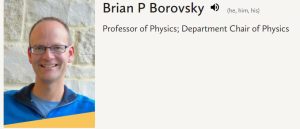
Brian Borovsky
Professor
Borovsky teaches Quantum Mechanics, Analytical Physics III (including special relativity and wave behavior), Musical Acoustics, and Advanced Physics Laboratory. He says he enjoys physics because it is “both profound and practical.” Borovsky’s research program explores the physics of friction, with applications in the areas of micro and nano-technology. In the lab, he works with student researchers to measure the friction in microscopic high-speed sliding systems where the lubricant films are just one molecule thick. In his free time he plays euphonium and enjoys running.
News and research
- St. Olaf team presents at Gordon Conference
- Finding a new way to ease microscopic friction
- Small but Mighty – A St. Olaf Magazine article featuring Brian’s research
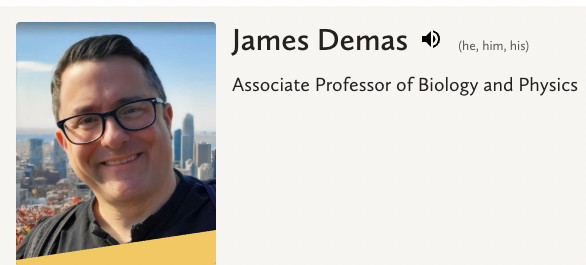
James (Jay) Demas
Associate Professor
Demas teaches a Principles of Physics course and associated lab for non-majors in addition to advanced laboratory courses. Demas is also a member of the Biology Department and teaches neuroscience courses, including Cellular and Molecular Neuroscience. His research is focused on the retina, the neural part of the eye. Specifically, he studies retinal circuits that estimate the brightness of the environment. Outside of St. Olaf, he loves to spend time with his daughters and his wife, Laura Listenberger, assistant professor of chemistry and biology at St. Olaf. Surfing, downhill skiing, and sailing are favorite outdoor pursuits.
Research
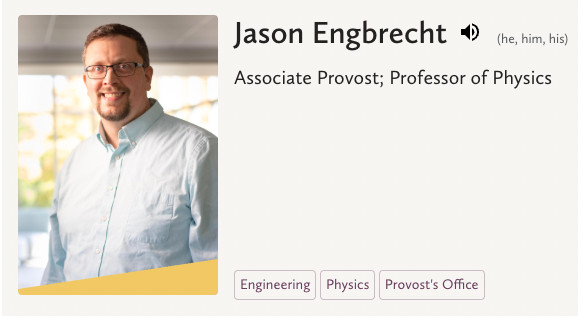
Jason Engbrecht
Associate Provost; Professor
Engbrecht teaches Analytical Physics, Electronics, engineering design, and a variety of introductory and advanced laboratories. He enjoys working with majors and non-majors alike, and encourages active participation of students in his classroom. Engbrecht’s research interests focus on the interaction of positrons and positronium with ordinary matter at low energies as well as robotics. He enjoys spending time with his wife and two daughters and watching Michigan football.
News and research
- Roll into 2012 with Target’s ‘Ole Goldberg’ machine
- Fast Company magazine highlights professor’s Rube Goldberg machine
- Small but Mighty – A St. Olaf Magazine article featuring Jason’s research
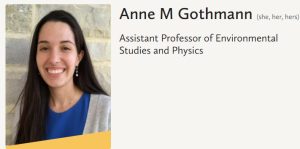
Anne Gothmann
Associate Professor
Anne’s research explores how to most effectively use ‘proxies’ (indirect indicators of climatic or environmental variables) to access environmental information about times far in the past for which we do not have instrumental records. In particular Anne uses geological, chemical and physical signatures present in coral skeletons to infer past ocean conditions and to understand how the growth of coral skeletons is affected by the environmental changes. Anne and her students grow corals in lab experiments to quantify how coral skeletons respond to specific environmental variables. Anne also uses methods that analyze the structure, mineralogy, and chemical composition of modern and fossil corals samples, including X-ray diffractometry, Scanning Electron Microscopy, and Mass Spectrometry.
Visit Anne’s website for more information: gothma1.wixsite.com/annemgothmann
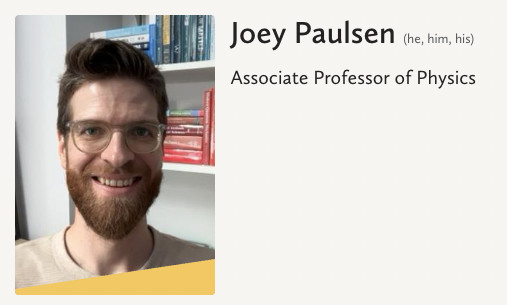
Joey Paulsen
Associate Professor
The Paulsen research group studies soft matter physics in the lab. We are interested in the wrinkling, crumpling, and folding of thin elastic sheets, the arrangements of solid particles in a sludge, and the rapid motions of liquids due to the surface tension that holds droplets together. These scenarios all feature soft, easily deformed materials that are common in nature and industry. Our goal is to uncover the fundamental principles that govern their behavior [1]. A second, related thread asks what kinds of information can be retained in disordered materials, such as amorphous solids or even crumpled sheets. Remarkably, many ordinary materials retain physical “memories” of their past [2]. We are using these findings to build mechanical spring networks that can store and process information.
[1] Wrapping liquids, solids, and gases in thin sheets. Paulsen, Annual Review of Condensed Matter Physics vol. 10 (2019).
[2] Mechanical memories in solids, from disorder to design. Paulsen & Keim, Annual Review of Condensed Matter Physics vol. 16 (2025).
You must be logged in to post a comment.